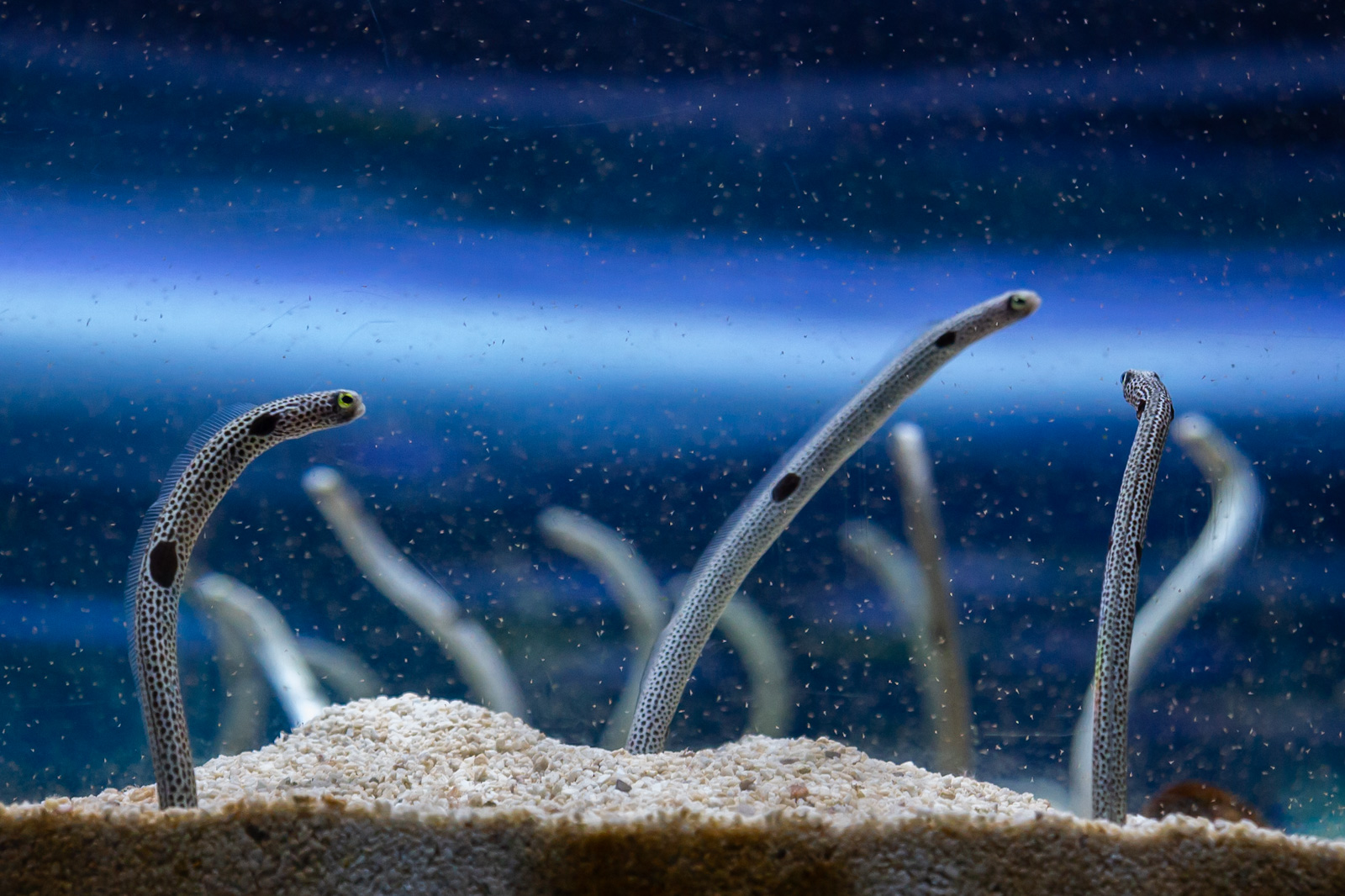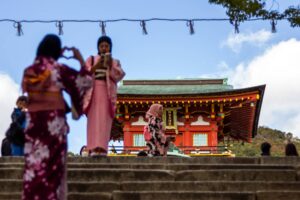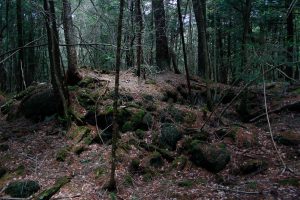Atoa Aquarium (stylized as átoa) is one of Kobe’s newest attractions, having opened just a few years ago in 2021. Located in Kobe Port, just across the water from Kobe Harborland and Meriken Park, it offers gorgeous views of the bay. The real attraction, of course, is inside, where visitors can immerse themselves in the world of aquarium art.
Aquarium art combines living marine creatures, usually fish, with digital art, light, and sound, to create theatrical-like exhibitions. The concept was pioneered by “aquartist” Hidemoto Kimura, who opened Japan’s first goldfish art aquarium back in 2007. I visited it once in Hiroshima when it was still traveling around (it’s now a permanent exhibiton on the ninth floor of a department store in Ginza, Tokyo) and recently saw something similar in Nara. As a former fish keeper and recovered vegetarian, the concept has always intrigued me. It’s so incredibly beautiful and yet also so terribly unethical.
Art aquariums get a lot of hate online, with many netizens expressing concern over small tank sizes and overstocking. Art should be thought-provoking, they argue, not cruel. People who have spent any length of time in Japan, though, know that animal cruelty is, sadly, par for the course. I’ll never forget the time I visited Ueno Zoo, for example, and realized how shockingly small the enclosures were. Then there’s all the animal cafes and deer parks, which pose their own ethical questions. Animal rights in Japan are just not as advanced as some other countries.
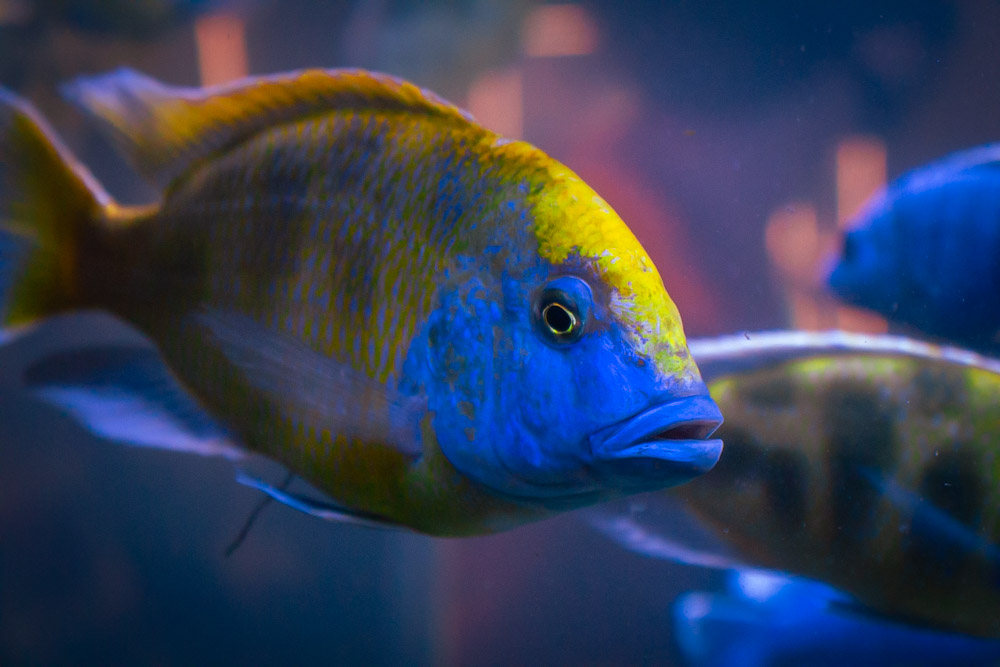


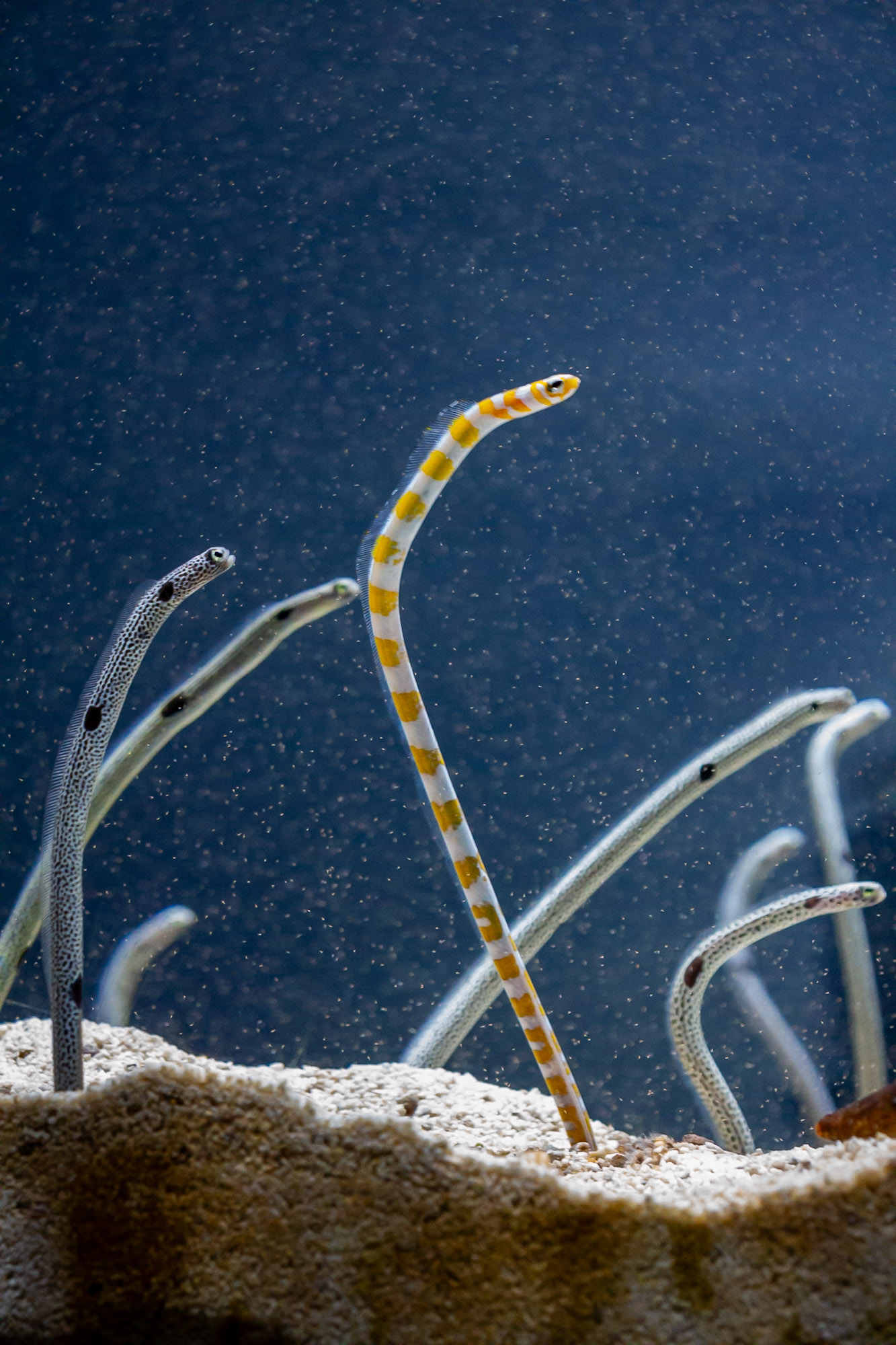

I try not to sit too high up on my horse, though, because I’m a carnivore and lawd knows the way we get our meat and fish isn’t very ethical either. Where’s the line, you know? (Hopefully not attached to a barbed hook, but I digress.) Being a whole aquarium and not just a small exhibit, I was interested to see what Atoa had going on, and so on one rainy day in Kobe, I headed over to find out.
Atoa is located inside the Kobe Port Museum, along with Kobe’s largest food hall and the Felissimo Chocolate Museum. It consists of seven themed exhibition spaces, or zones, a rooftop garden with a small cafe, and a museum shop. The ticket office is just outside the entrance on the second floor and, if you’re lucky like me, you’ll be asked via loudspeaker where you’re from so everyone else in line can turn around and listen. After dazzling the audience with a perfectly-pronounced “Minami-Afurica” and parting with 2600 yen, I headed inside.
The first zone, Cave: Cave of the Beginning, is filled with colorful lights and mirrors and a couple of tanks with guppies, cardinal tetras, red piranhas, and peacock bass. Next up is Marine Note: The Fluctuation of Life. This one was my favorite only bvecause it has spotted garden eels and I love watching those little buggers burrowing in and out of the sand. You can also see red lionfish, cownose eagle rays, caribbean seahorses, and razorfish. Then there’s the “Pearl Removal Experience,” which, for 1000 yen, allows you to choose your own oyster, dig out its pearl, and, for another 1500 yen, turn it into a piece of jewelry. Yeah, no.

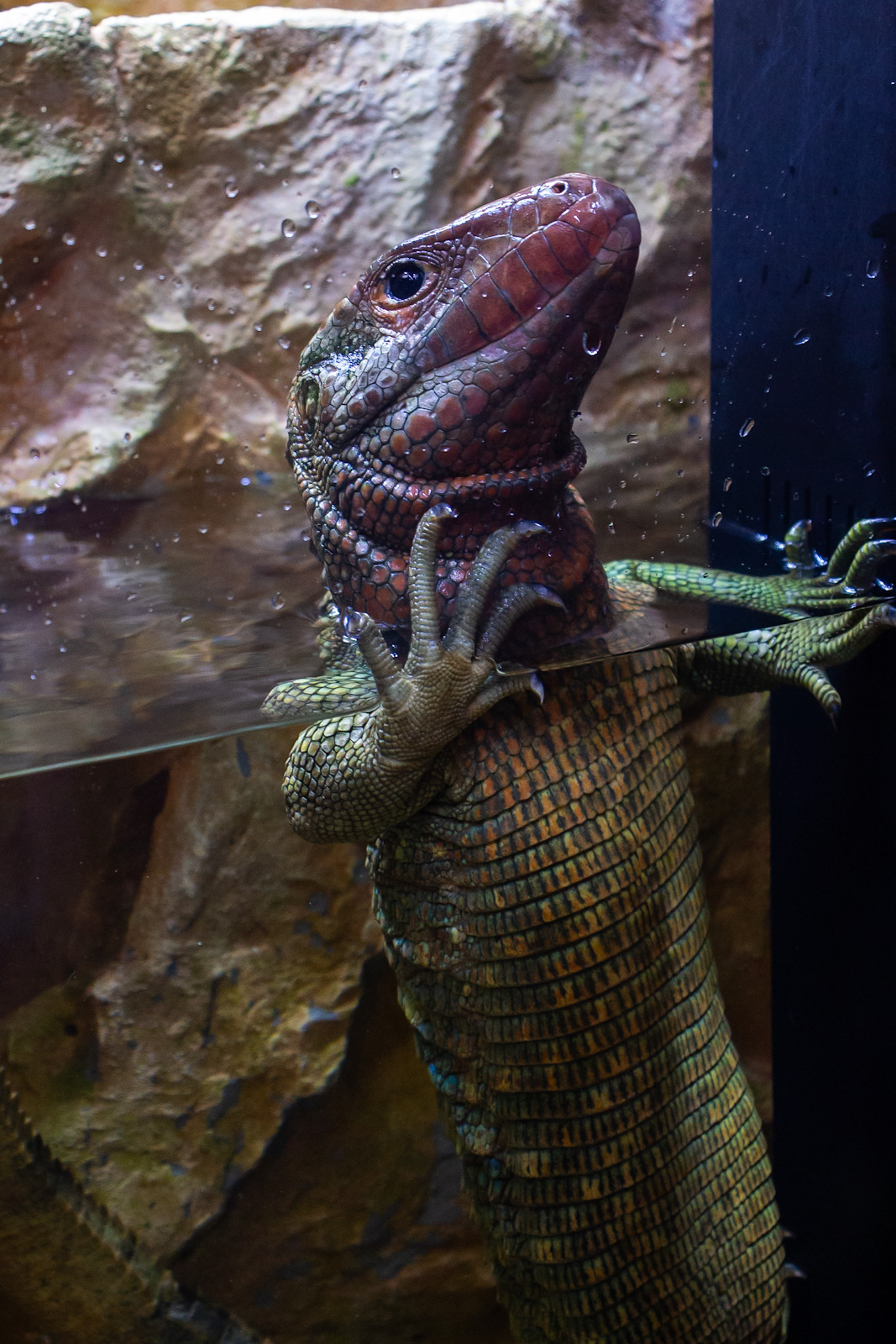

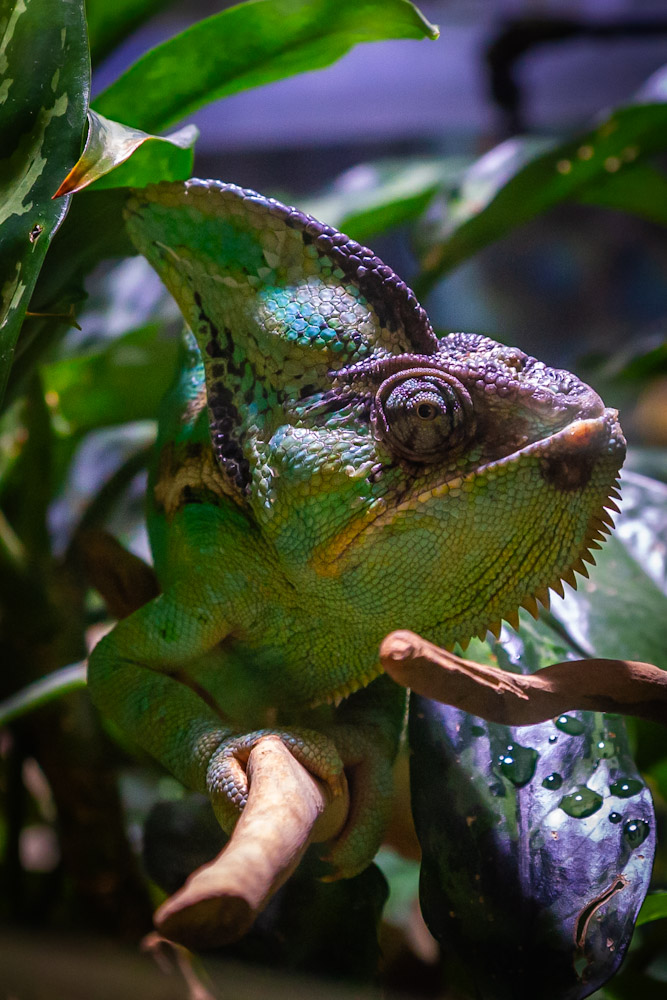
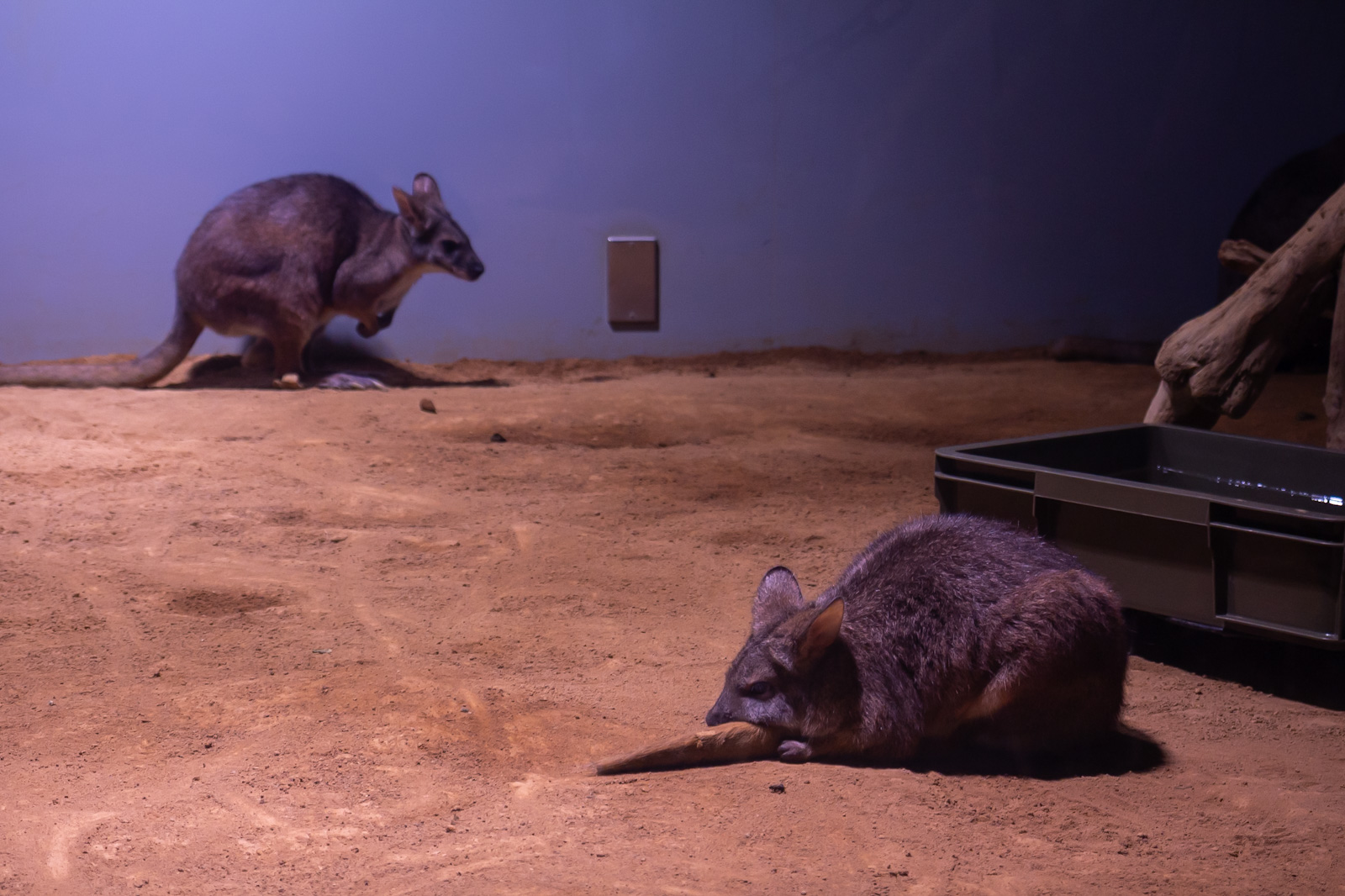

The next zone is Elements: The Forest of Spirits where the amphibians, reptiles, and marsupials are housed. There’s naked mole rats, tree frogs, snakes, woodchucks, wallabies, and giant tortoises, which were being let out of their enclosure for feeding. This is around the time when I started to feel a little pissed off. I don’t know much about wallabies but I’m pretty sure they’re not supposed to be kept in such a small space indoors with artificial lighting. One of them was so stressed out he was chomping on his own tail. Then there was the tank for the caiman lizard, which was so small it was uncomfortable to watch. And do giant tortoises really enjoy roaming around in a faux disco? I think not.
Atoa continues on the third floor with Foyer: The Room of Inquiry, which is a library-like space with over 2500 books and a small shop. There’s also a few tanks with more fish and polka-dot stingrays. The rays are gorgeous, but again, I don’t think they’re supposed to be kept like that. The next zone, Miyabi: Between Peace and Light, is the most impressive design-wise. It’s built to look like a traditional Japanese garden, complete with a vermilion bridge and “river” of koi. There’s also a few bowls with different varieties of goldfish.
Planets: Miracle Planet features Japan’s largest spherical aquarium, which…is not very large in the grand scheme of things. It’s filled with ribbon eel, orchid tang, cherry anthias, and goldfish. The last zone is a gallery-style corridor which features some coral and tube anemone.




By the time I had finished exploring all the zones, it was lunchtime and I was in need of a snack, so I headed up to the rooftop garden, Skyshore. The cafe there sells a variety of really cute themed food, like otter buns, octopus churros, and aquarium bubble squash, which is pricey but hits the spot. What you may not be able to stomach is the capybara, penguin, otter, and beaver enclosures, which are frightfully unstimulating and ridiculously small. The rooftop does have some nice views, though, of the bay and city below.
As I munched on my corn dog and fries watching the cabybaras devour their own lunch, I wondered if I should have come at all. Sure, the aquarium exhibits are interesting to look at and fun to photograph, but do they provide any real educational value? Not really. And isn’t that the point of an aquarium to begin with? Then again, maybe arriving at such questions is where the values lies, regardless of whether they are posed with any intention. I dunno. I think I’ve had my fill of aquariums for a while.



Visit átoa Aquarium (Or, you Know, Don’t)
Atoa is a 20-min walk or 13-min bus ride from Kobe-Sannomiya Station. From the Sannomiya Ekimae bus stop, which is on the north side of Hankyu Department Store, hop on the Port Loop bus for 8 minutes and get off at Shinkocho.
Hours: 10:00~19:00
Admission: 2600 yen
